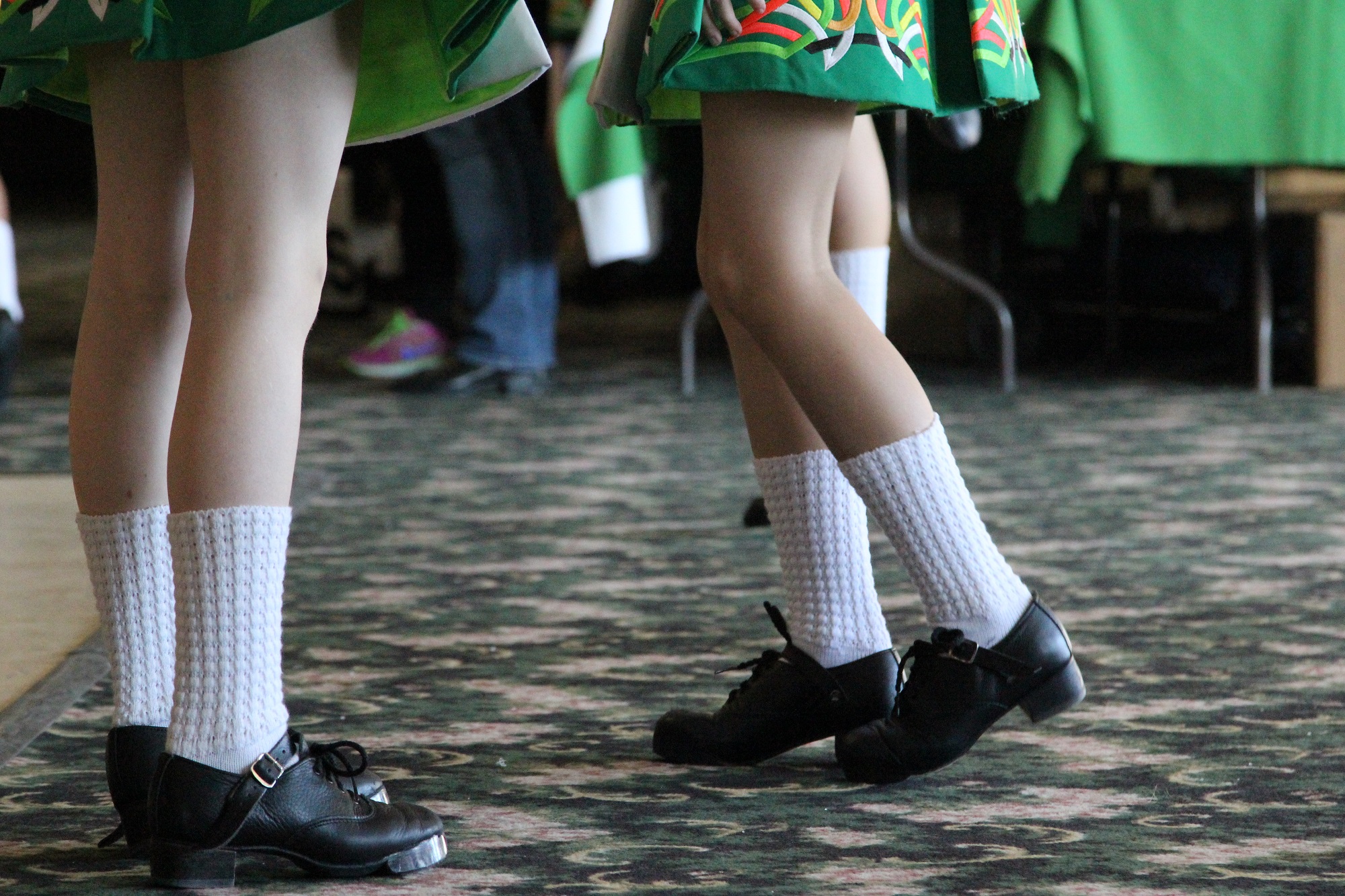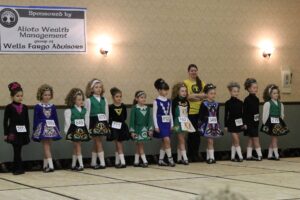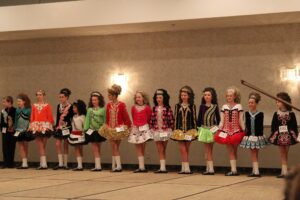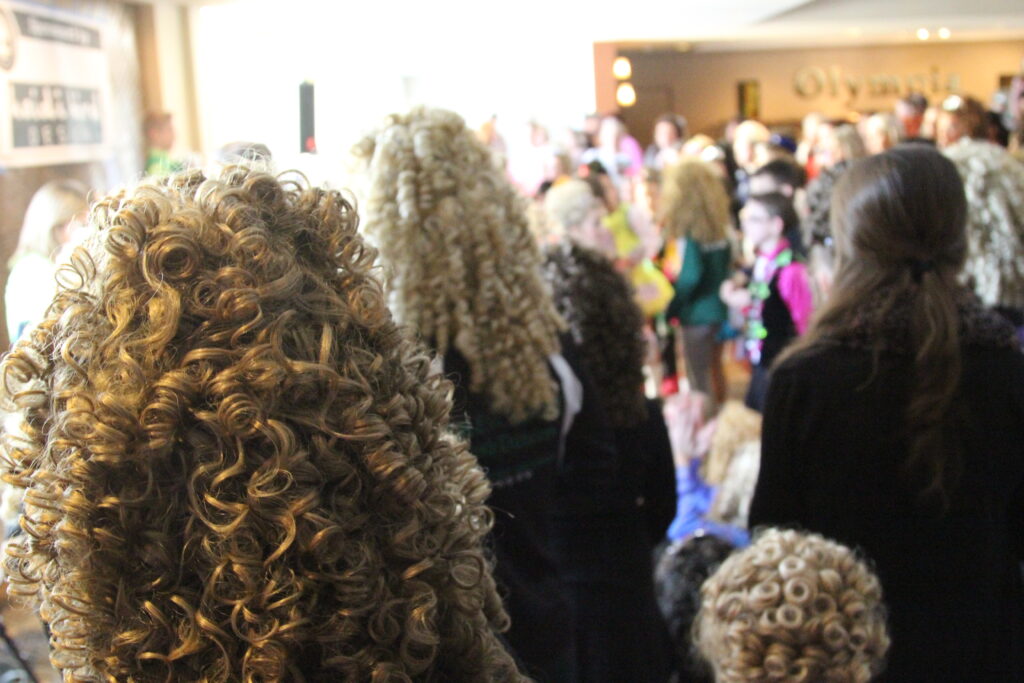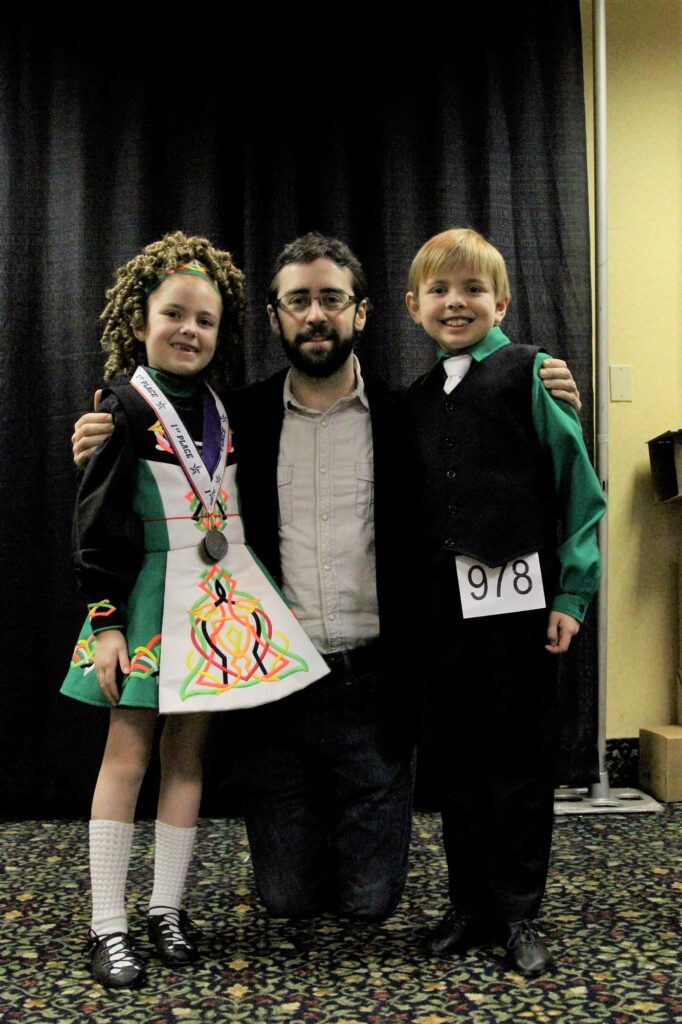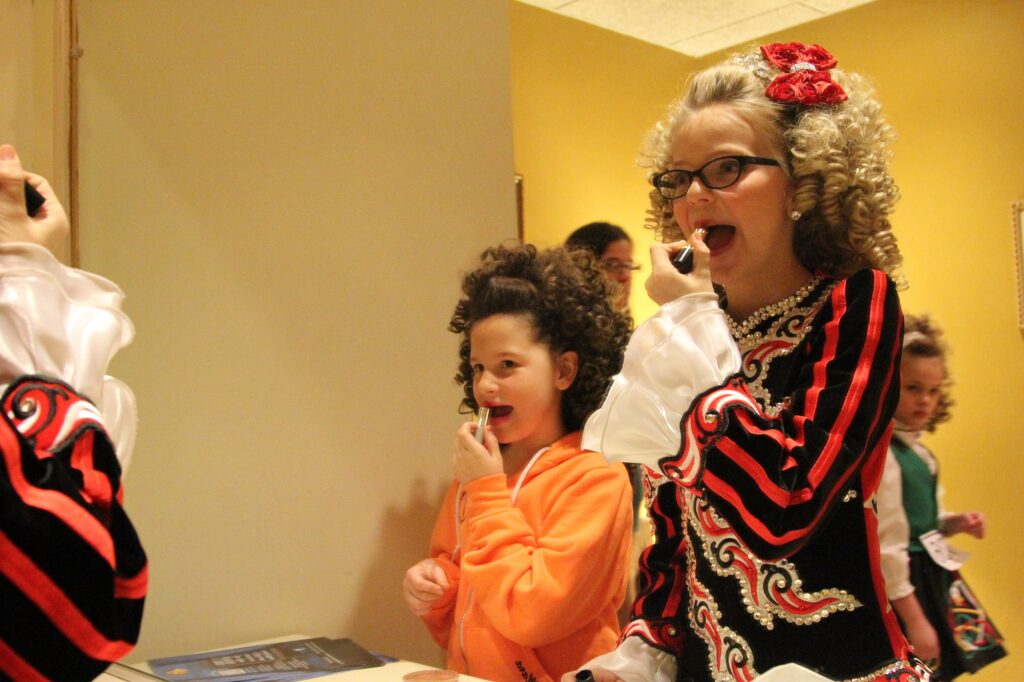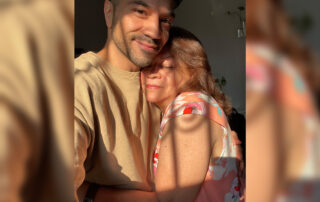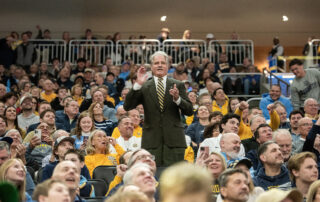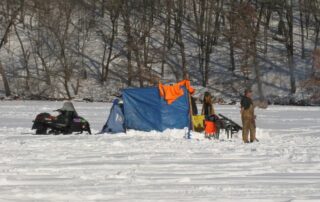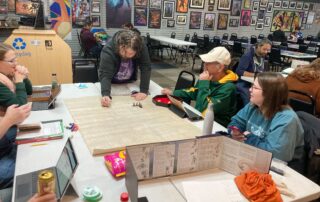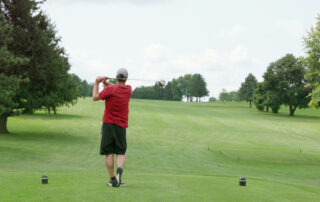Irish dance is booming in Milwaukee, where there are seven dance schools and counting. Irish dancers typically keep their arms straight at their sides while their legs quickly leap, kick and shuffle across the floor.
In celebration of St. Patrick’s Day, WPR’s Maureen McCollum attended an Irish dance competition, known as a feis, in Oconomowoc in 2014 to check out Wisconsin’s dancers and teachers.
==
“Oh a feis? No one knows what a feis,” laughed Maura Heck, a TRCG certified Irish dance teacher and co-owner of Cashel Dennehy School of Irish Dance in Milwaukee. “A feis is an Irish dance competition. It is craziness, but it’s a competition where kids get to come and dance.”
Today, 930 competitors have packed into the Olympia Resort and Conference Center in Oconomowoc. When they enter a specific competition, they do two steps of a dance on stage in front of judges. They dance reels, jigs, slip jigs, hornpipes, treble jigs, sets and more.
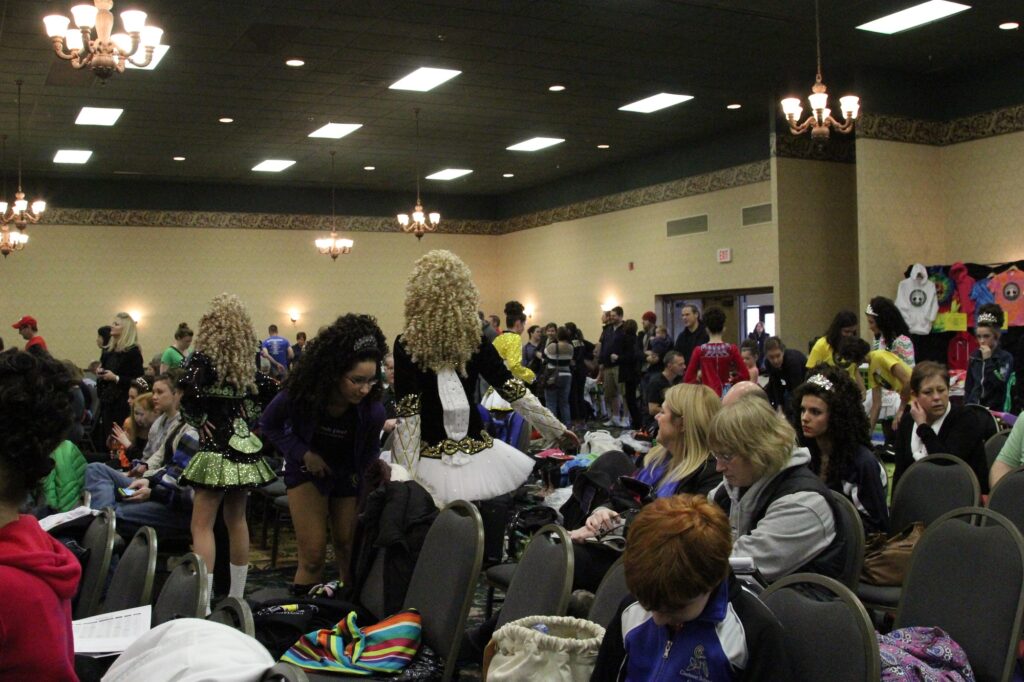
Dancers and their families pack into a conference room as they prepare to compete in different dance competitions throughout the day. (Photo by Molly McCollum)
“It’s just really fun. You get some fly, which is awesome,” said Siobhan McPhail of Milwaukee, a 14 year-old dancer with Kinsella Irish Dance. “It just takes everything else that you’re stressed about away and you just get to focus on dance.”
Beyond being a cultural art form, McPhail said Irish dance is a sport.
“You need to have stamina, strength, flexibility and anything that any other athlete needs,” she said.
The dancers also have two types of outfits. Irish dance schools have matching dresses or vests for group dances and team competitions. Eventually, the dancers earn solo dresses or vests that are unique to them.
- A group of younger Irish dancers wearing school dresses line up and prepare to compete in front of judges. (Photo by Molly McCollum)
- A group of Irish dancers wearing mostly solo dresses line up and prepare to compete in front of judges. (Photo by Molly McCollum)
Mary Papageorge, a 13 year-old dancer with Trinity Academy, just competed in the treble jig under-14 open championship category. As she changes out of her hard shoes, she describes her custom-made dress which she helped design.
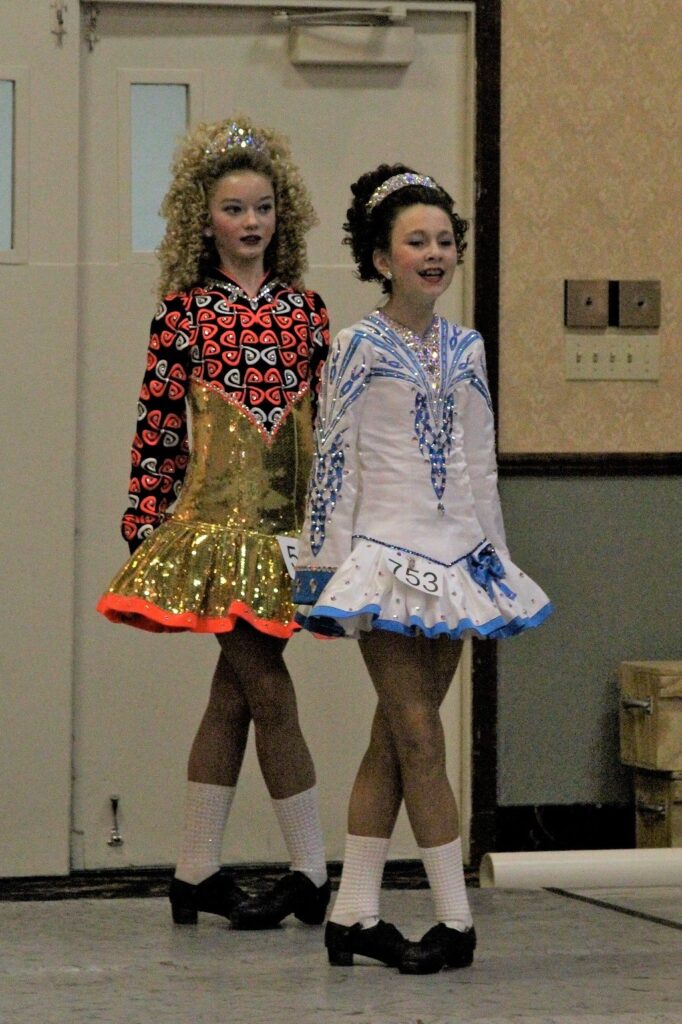
Megan Lilibridge (l-r) and Mary Papageorge prepare to compete in a treble jig competition. (Photo by Molly McCollum)
“This dress, it’s baby blue with a lot of white. It has a lot of accents on it. That’s a Celtic design and it’s kind of like a tennis skirt style,” said Papageorge smiling. “And then my mom added some blue crystals along the sketching of the skirt and to the bodice.”
“The dresses many years ago used to be more authentic and they actually had Irish designs on them from this book called “The Book of Kells,” explained Heck. “They’ve evolved into more geometric shapes and ‘bling,’ as everyone calls it.”
And what about the curly hair?
“There’s folklore about, ‘Oh back in the days of ancient Ireland, like they all curled their hair so it bounced nicely as they were dancing down the aisles and dancing at the crossroads,’” said Heck.
When she was younger, getting the perfect, tight ringlet was not as easy as it is today.
“We actually had to put the little pink curlers in our hair and sleep on them overnight. Your head (would rest) against a window if you’re driving to a feis in Ohio. Oh, it was so painful. And it took an hour to uncurl them in the morning,” said Heck laughing. “Now they’re wigs and they take five minutes.”
“I like to put the wig on the Americans,” said Sean Beglan, owner and director of Beglan Academy of Irish Dance.
Not only is Beglan a TCRG certified instructor, but he also danced professionally.
“Before I finished high school, I was with ‘Riverdance‘ part-time, which still is a big Irish dance show. I left high school and got a call two days later that ‘Riverdance’ wanted me full-time. My first city was Milwaukee, Wisconsin at the Riverside Theater.”
Beglan said he feels lucky to have landed in Wisconsin, specifically, Milwaukee.
“What is great about this city is that in Milwaukee we have Irish dance, plus Irish music, plus Irish singing, plus Irish language. We have Celtic studies,” said Beglan. “There’s such a bloodline of Irish running through this area of America that you can’t get away from it.”
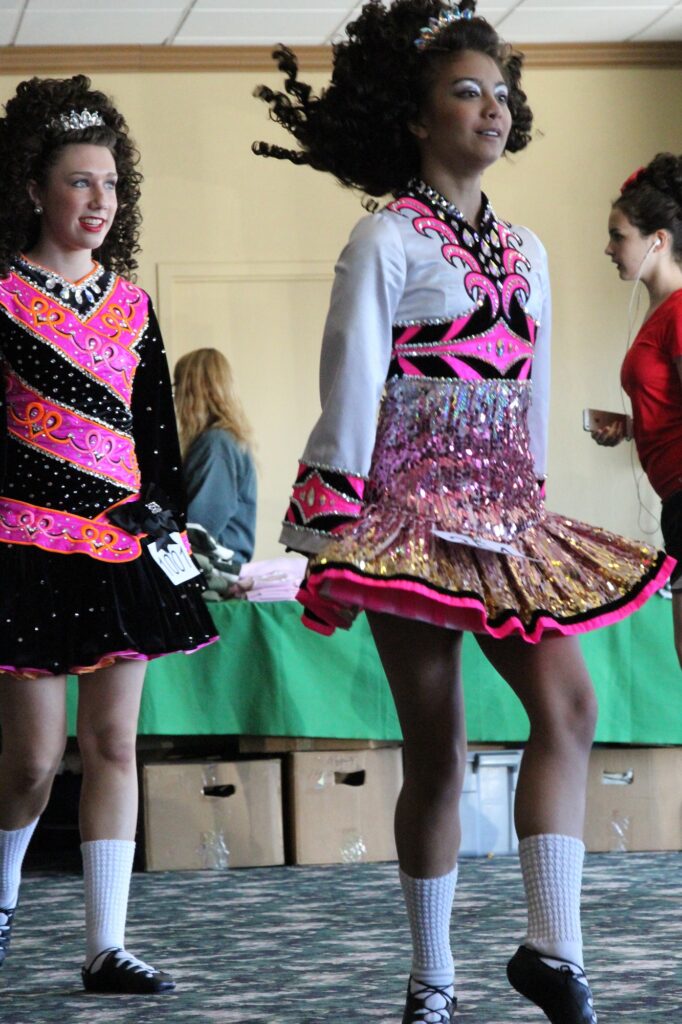
Irish dancers practice before their competition in the conference center lobby. (Photo by Molly McCollum)
(This digital article was updated on March 3, 2021.)
